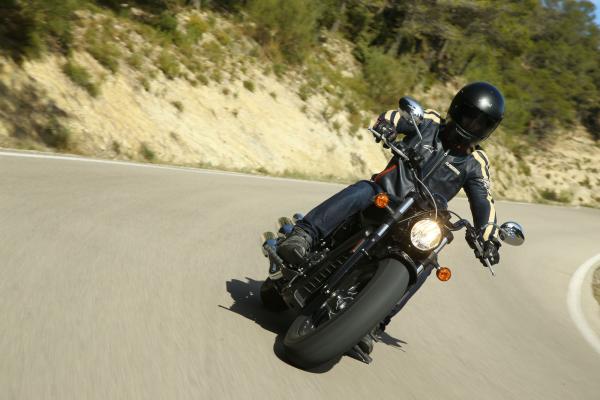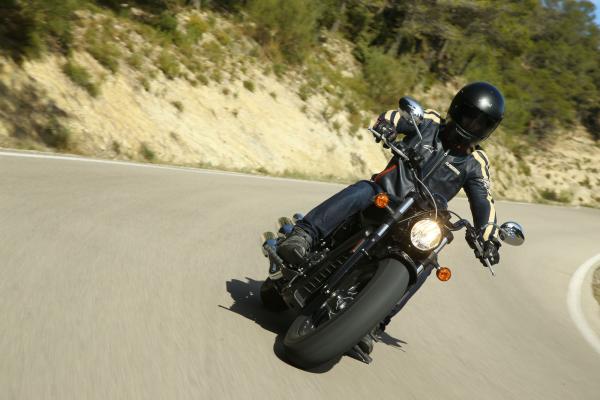First ride: Indian Scout Sixty review
Here’s an old news story you might have missed: Indian are back

Member for
54 years 8 monthsIN fact they’ve been back for a few years now, although less than exhaustive coverage in the UK bike press could mean some have missed the fact. Following the brand’s rebirth at the hands of manufacturing giant Polaris, there are now seven models in the line-up. The latest is the Scout Sixty.
You might have heard of the Scout, either the 1920s model that your granddad’s mum used for the school run or the more recent 2015 model. Either way, it’s a name in motorcycling lore.
The Scout Sixty shares a great deal with its elder sibling, the Scout. However, the Sixty is ‘just’ 999cc, as opposed to the 1133cc of the Scout. They use the same block but the Sixty’s bore is smaller. In the parallel universe of cruising, at 999cc, it’s a baby. It makes a sniff under 80hp and 65lbft of torque which, in this universe, is okay with me.
While the frame, suspension and engine block are the same, the Sixty only has a five-speed box as opposed to six on the Scout. At 246kg, it’s light, for a cruiser, but one of the Sixty’s real appeals is its seat height. At 643mm, it’s practically on the floor. The low stance is aided by the wheels, which are 16-inch front and rear.
The Sixty stops via the single front twin-piston brake caliper and 298mm disc, and a not-to-be-sniffed-at braided steel brake line. ABS comes as standard.
Comparing the Scout and Scout Sixty side by side, the Sixty features less chrome. It’s more - as the Yanks like to say - blacked out. It’s aiming for a younger generation both in terms of its engine capacity and styling.
Firing it up, I expected the Sixty to clatter away and do its ‘authentic American iron and grit’ bit. Perhaps I’ve been conditioned by another American cruiser brand to expect the bike to crab its way across the car park while sitting in neutral on its side-stand.
It didn't. It's mild-mannered and I didn’t expect that. Despite Indian laying on a decent amount of ‘iron and grit’ heritage nonsense in the pre-ride press conference, I expected to feel the engineered-in engine vibrations and carefully tuned ‘clunk’ into first gear.
Far from it. The 999cc twin sits obediently in neutral, humming along, making no fuss. When I select first gear, the absence of a neutral light on the dash is the first sign it’s gone in. There’s no clunk or clatter. Dare I say it, it feels very Japanese.
That’s no bad thing, although die-hard cruiser fans might relate the word ‘Japanese’ to characterless. Equally you could relate it to ‘competent’, ‘well-engineered’ and ‘precise’.
The fuelling on the Sixty is immaculate. It’s one of the best-fuelled, best-behaving engines I’ve ever tried. Sure, it doesn’t have a load of grunt, but there’s plenty on tap and it’s eager to spin up, a lot more eager than you’d think any cruiser would be. It’s almost impossible to make the motor struggle. Load it up in fifth at 40mph and it doesn’t threaten to shake itself to bits. At 90mph it feels fairly happy too.
Third, fourth and fifth gears feel close together. One of the great features of a majority of cruisers I’ve ridden is the final clunk into an over-drive-like top gear, which this doesn’t share. It feels like going from fourth to seventh. I know the Sixty is ‘only’ a baby but the engine is so good, I can’t see it struggling to pull a taller top gear, with the revs dropped right down. Winding along at 50mph and a handful of revs is one of the ways any cruiser justifies its existence. That’s sadly lacking on the Sixty.
Much faster can feel perverse on a cruiser. That ‘wind in your hair’ feeling is actually a ‘stuck in a wind tunnel’ feeling at anything over 70mph. The riding position makes you feel like the sail on an 80mph boat.











